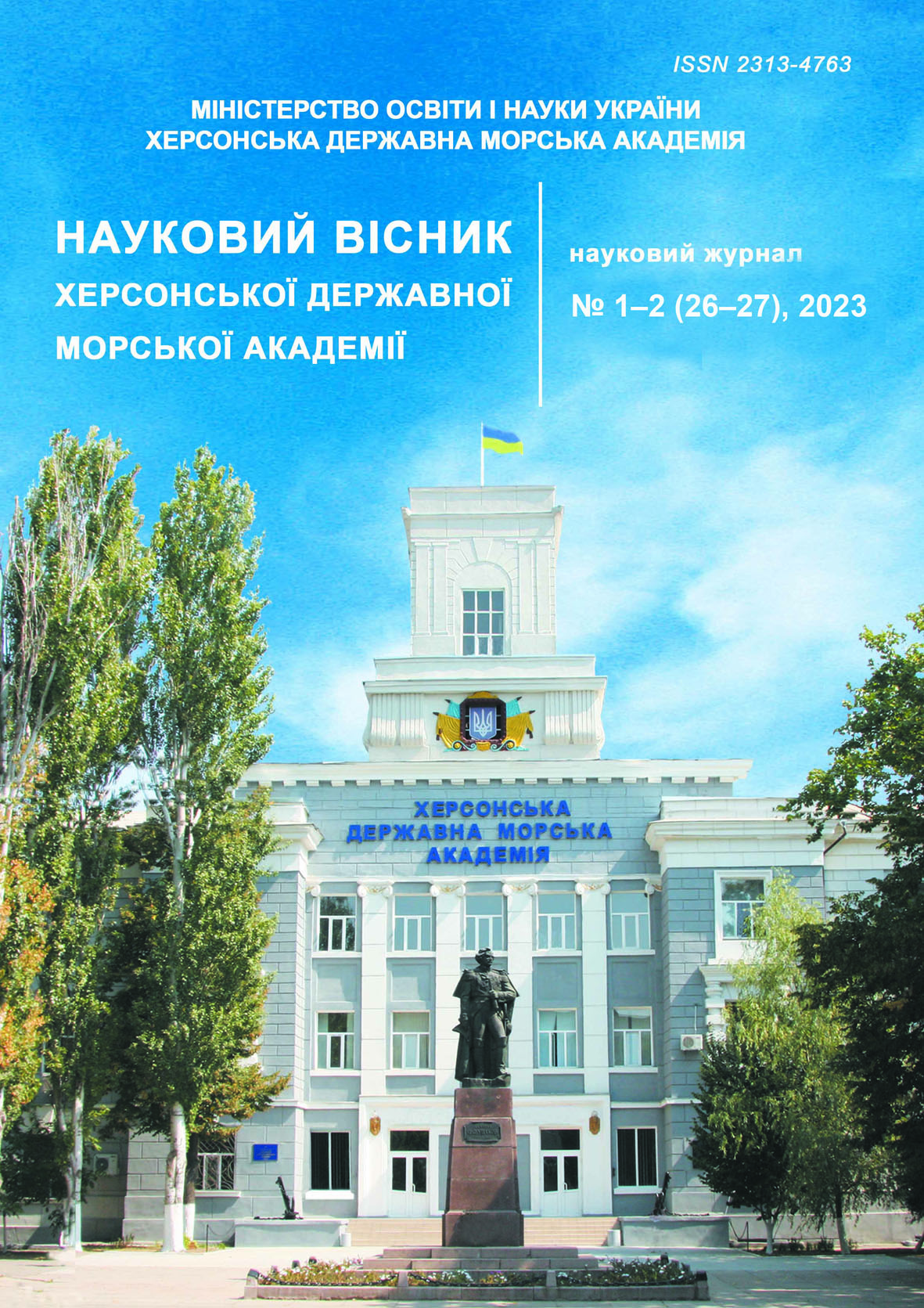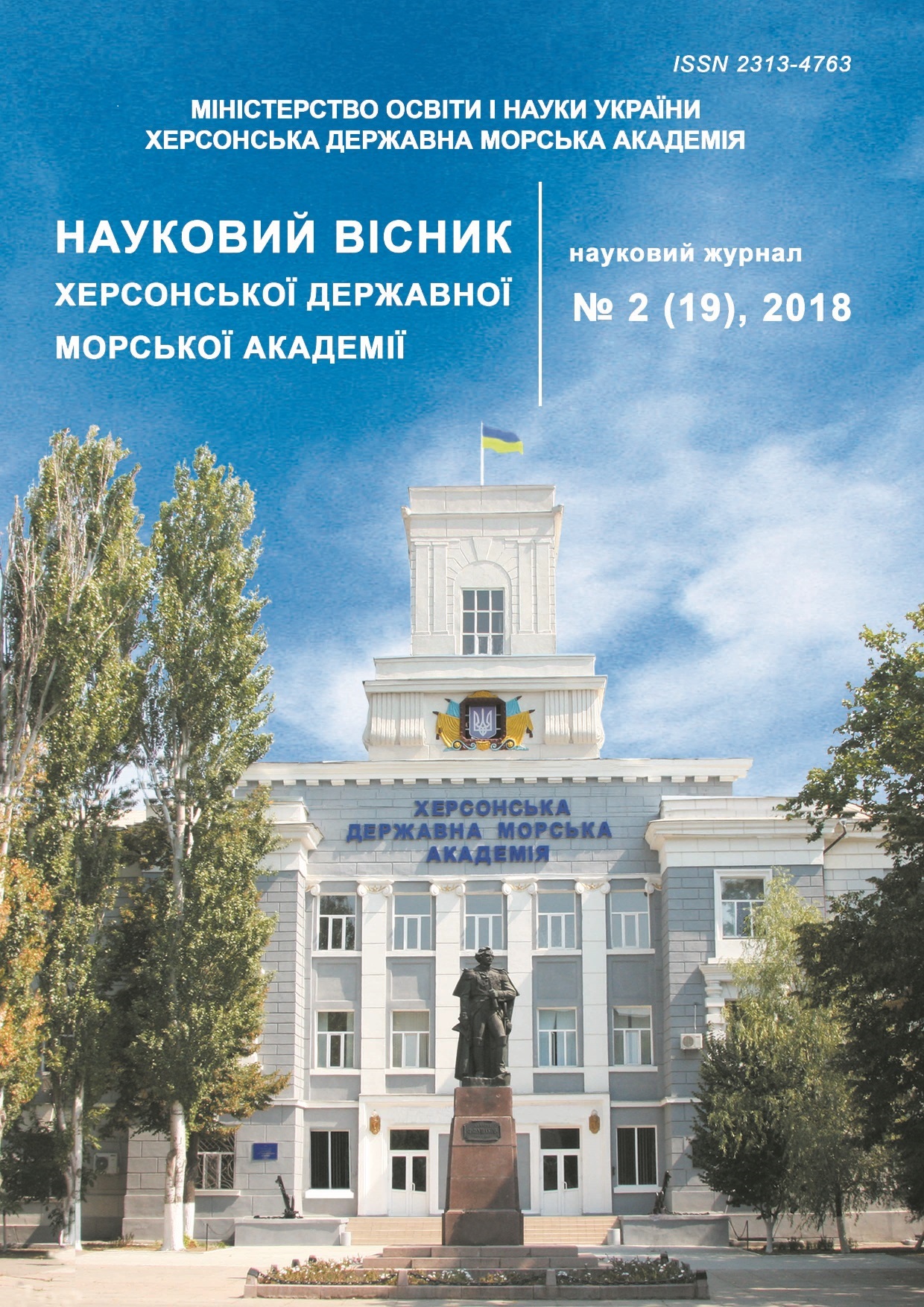THE METHODS AND MEANS OF BRIDGE TEAM SIMULATOR TRAINING
Abstract
The main source of incidents on merchant fleet is the «human factor» of bridge team. The most efficient solution to decrease its influence is to provide navigators with an effective simulator training. It is used both to achieve the basic knowledge and skills of navigator and to learn the members of bridge team on how to work and organize the cooperation on bridge effectively.
The IMO model courses and Ukrainian legislation acts regarding the simulator training of bridge team are critically overviewed in the current article. It is shown that there are no clearly defined algorithms of exercise scenario generation and principles of an unbiased performance assessment in these documents.
We reviewed the main navigational tasks of a bridge team during the voyage and proposed their formalized form: passage planning, a planned alteration of heading, deviation task, course keeping and collision avoidance maneuver. As a result we assume that the safe sailing probability function can be used as an effective criterion of navigator’s competence who is a leader of bridge team.
The main navigational tasks were classified, their formalized form and solutions represented. A structure of bridge team simulator training complex is defined. It shows that the full functionality of databases cannot be used and no knowledge bases are included. Moreover, all the tasks are generated and controlled by the instructor this is why he is overloaded and cannot effectively monitor the bridge team members’ cooperation. His actions are not limited therefore, the exercise can appear not adequate to reality and his assessment methods to be biased.
Such a situation requires the structure of training complex to be revised. A suggested formalized function of risk and safe sailing probability can be used as a basic principle of both exercise automated generation and students’ performance assessment criterion.
The methods shown in this paper allow us to analyze the real voyages and select optimal routes on a specific area as well. A decision-making support system can be designed based on risk assessment and a safe sailing probability function.
References
2. Наказ Міністерства інфраструктури України №567 від 07.10.2014 «Про затвердження вимог до тренажерного та іншого обладнання, призначеного для підготовки та перевірки знань осіб командного складу та суднової команди». Режим доступу : www.zakon3.rada.gov.ua.
3. IMO model course 1.22 Ship Simulator and Bridge Team Work. IMO, London, 2002. – 70 p.
4. IMO model course 7.03 Officer in charge of a navigational watch. IMO, London, 2014. – 275 p.
5. Наказ Міністерства інфраструктури України №491 від 07.10.2014 «Вимоги до тренажерного та іншого обладнання, призначеного для підготовки та перевірки знань судноводіїв на повномасштабних навігаційних тренажерах з візуалізацією».
Режим доступу : www.zakon3.rada.gov.ua.
6. Міжнародна конвенція про підготовку і дипломування моряків та несення вахти 1978 року (консолідований текст з манільськими поправками). – К. : ТОВ «ВПК «Експрес-Поліграф»«, 2010. – 566 с.
7. Павловская О. О. Алгоритм определения параметров математической модели механика-водителя, управляющего криволинейным движением быстроходной гусеничной машины / О. О. Павловская, С. В. Кондаков // Вестник ЮУрГУ. – 2012. – № 3. – С. 43–47.
8. Weir D. H. Models for Steering Control of Motor Vehicles / D. H. Weir, D. T. McRuer // Proc. 4th Annual NASA, 1968. – 192 c.
9. Устюжанин А. Д. Динамическая идентификация и оценивание характеристик человека-оператора в системах «человек–машина» / Устюжанин А. Д., Пупков К. А. – М. : Изд. РУДН, 2011. –180с.
10. Мореходные таблицы МТ-2000. Под ред. Емец К.А. СПб: ЦКФ ВМФ, 2002. – 585с.
11. Петров Ю. П. Оптимальное управление движением транспортных средств. / Ю. П. Петров. – Л. : Энергия, 1969. – 96 с.
12. T. I. Fossen. Handbook of marine craft hydrodynamics and motion control. – John Wiley & Sons Ltd, 2011. – 575p.
13. Красовский Н. Н. Теория управления движением / Н. Н. Красовский. – М. : Наука, 1968. – 476 с.
14. Петров Ю. П. Оптимальные регуляторы судовых силовых установок (теоретические основы) / Ю. П. Петров. – Л. : Судостроение, 1966. – 118 с.
15. Петров Ю. П. Синтез оптимальных систем управления при неполностью известных возмущающих силах / Ю. П. Петров. –Л. : Изд-во Ленингр. ун-та, 1987. – 292 с.
16. Понтрягин Л.С. и др. Математическая теория оптимальных процессов. – М. : Наука, 1969. – 384 с.
17. Болтянский В. Г. Математические методы оптимального управления / В. Г. Болтянский. – М. : Наука, 1969. – 408 с.
18. Рей У. Методы управления технологическими процессами / У. Рей. – М. : Мир, 1983. – 368 с.






